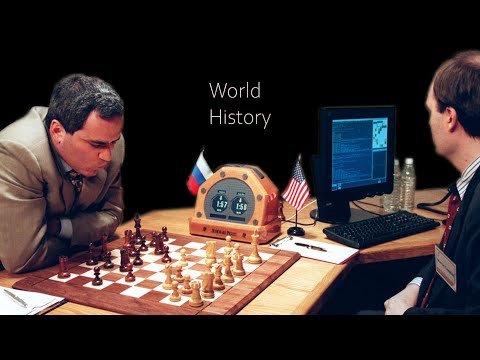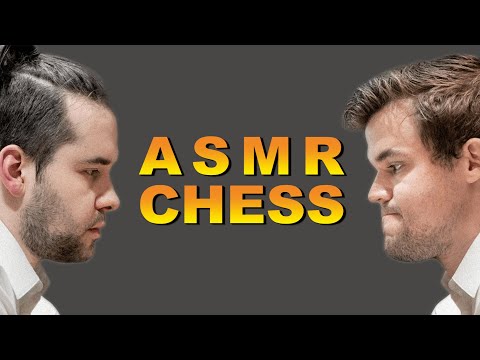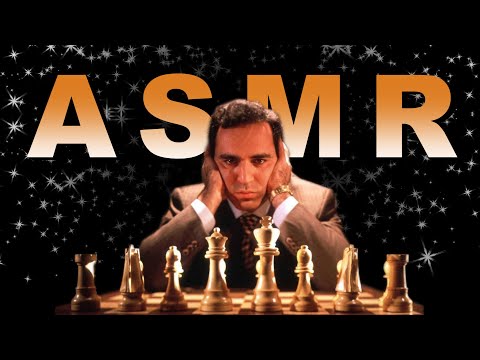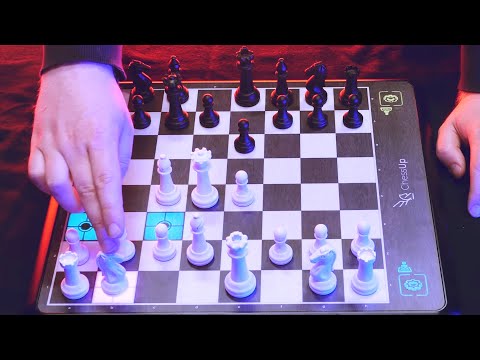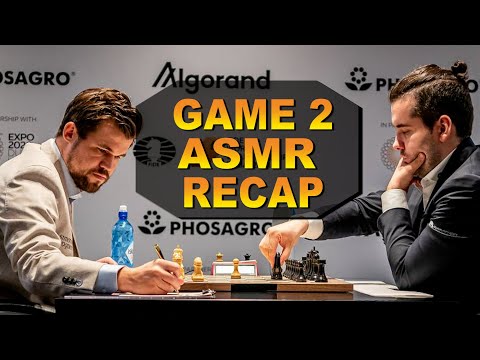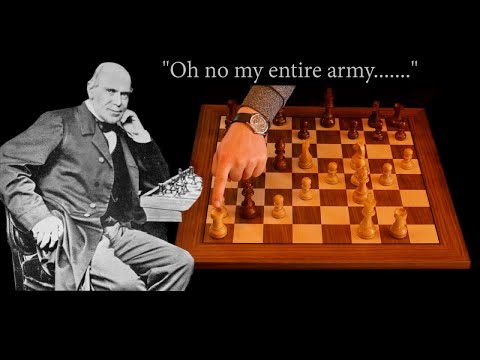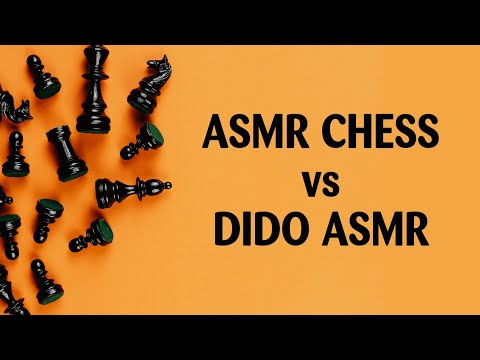The Chess Move that made World History ♔ ASMR ♔ Deep Blue vs Kasparov
In 1997 the human world champion Garry Kasparov played a 6-game match against the IBM supercomputer Deep Blue (nicknamed Deeper Blue). He won the first game in a breeze, employing a standard strategy at the time exploiting the shortcomings of artificial intelligence. In the second game of the match, something unprecedented happened. This video dives deep into that game and explains why it is the most significant game of chess ever played.
When I refer to the 'opening book' I'm talking about a database of optimal moves found by chess experts and programmed into the machine. Nick De Firmian lead this effort.
Deep Blue was first developed as 'Deep Thought', based on the special purpose chip designed by Feng-hsiung Hsu. Kasparov played a 2-game match against Deep Thought in 1989 and won easily.
After this match IBM invested heavily in the project and by 1996 they were ready to challenge Kasparov again - this time with a huge version of Deep Thought that they had named Deep Blue (a reference to IBMs nickname Big Blue).
Kasparov lost the first game, but won the 6-game match convincingly. He employed a anti-computer strategy that exploited general flaws in AI at the time. By 1997 IBM challenged for a third time with a heavily upgraded Deep Blue and this time they won the match. Kasparov won the first game with his anti-computer strategy and looked to be cruising to another match-win. In game 2 however, Deep Blue played an absolutely fantastic game and won. It did not exhibit any of the usual hallmarks of AI and did not suffer from the flaws that Kasparov had previously exploited. In fact it played so intelligently, laid long-term plans and resisted material temptations that Kasparov was convinced that the Deep Blue team was cheating by having a human help the computer behind the scenes.
The next 3 games were drawn and it all came down to the 6th and final game, where Deep Blue had white. Kasparov employed an extremely risky opening, that is considered unsound and even losing by grandmasters. The opening requires an early positional sacrifice that no computer had previously been able to find. It therefore came as a shock when Deep Blue instantly played the sacrifice and won the game and thus the match. It was later revealed that Nick de Firmian and the opening book team had installed that particular opening because they were aware that the machine was not able to find the sacrifice itself. Therefore Kasparov lost the 'battle for humanity' against human opening preparation. Most videos you'll find on YouTube about the match focuses on this last, 6th game. This is misleading. What is interesting is the 2nd game, where Deep Blue showed us that computer intelligence will not remain clumsy and 'artificial looking' and in fact the future was already happening.
Kasparov felt he was being mistreated during the match, with the Deep Blue team making life uncomfortable for him. He no longer believes that they cheated though. Kasparov is now a 'tech optimist' and has written extensively on the subject of artificial intelligence.
___
The Turing test, originally called the imitation game by Alan Turing in 1950, is a test of a machine's ability to exhibit intelligent behaviour equivalent to, or indistinguishable from, that of a human.
When going over game 2 of the 1997 match, it is not possible to determine if a very strong human grandmaster was playing the white pieces or if it was indeed a machine. There were no give-aways. In fact the machine played in a very intelligent and strategical way that seemed to mimick the style of Karpov, Kasparov's old nemesis.
But IBM had of course not hired Karpov to play the computer moves. Instead, what Kasparov was suspecting, was that they had a chess expert (by Kasparov's estimation someone of IM strength would be good enough) sit in a secret room with access to a screen showing Deep Blue's calculations. Whenever Deep Blue would suggest a 'typical computer move' the human assistent would simply press a button to make the computer drop that particular line. Rinse and repeat this process until you find a satisfactory move.
While Kasparov no longer believes that IBM cheated, this idea inspired the ever-rourceful russian to come up with 'Advanced Chess' where humans would team up with computers and play eachother. As Kasparov predicted the combination of chess grandmaster + computer was far superior to both the human and computer on their own.
Deep Blue vs Garry Kasparov
1.e4 e5 2.Nf3 Nc6 3.Bb5 a6 4.Ba4 Nf6 5.O-O Be7 6.Re1 b5 7.Bb3
d6 8.c3 O-O 9.h3 h6 10.d4 Re8 11.Nbd2 Bf8 12.Nf1 Bd7 13.Ng3
Na5 14.Bc2 c5 15.b3 Nc6 16.d5 Ne7 17.Be3 Ng6 18.Qd2 Nh7 19.a4
Nh4 20.Nxh4 Qxh4 21.Qe2 Qd8 22.b4 Qc7 23.Rec1 c4 24.Ra3 Rec8
25.Rca1 Qd8 26.f4 Nf6 27.fxe5 dxe5 28.Qf1 Ne8 29.Qf2 Nd6
30.Bb6 Qe8 31.R3a2 Be7 32.Bc5 Bf8 33.Nf5 Bxf5 34.exf5 f6
35.Bxd6 Bxd6 36.axb5 axb5 37.Be4 Rxa2 38.Qxa2 Qd7 39.Qa7 Rc7
40.Qb6 Rb7 41.Ra8+ Kf7 42.Qa6 Qc7 43.Qc6 Qb6+ 44.Kf1 Rb8
45.Ra6 1-0
Last updated:
